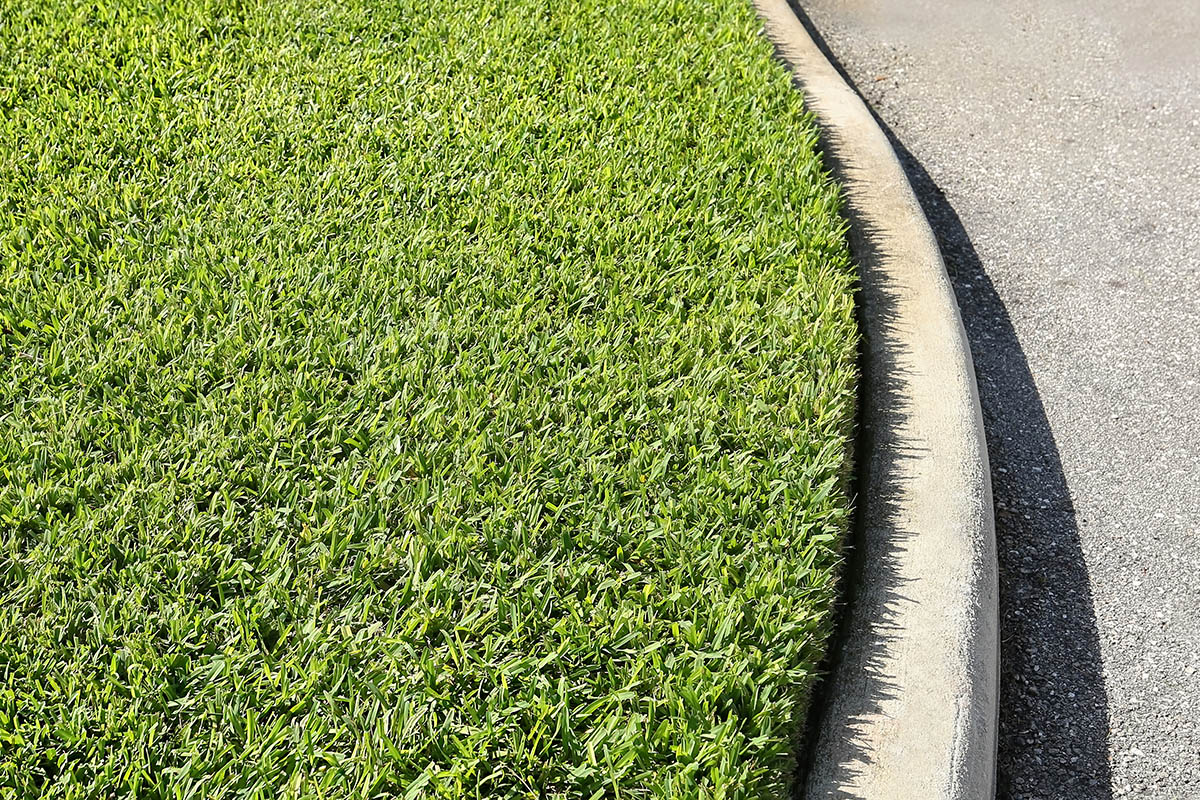Don’t you hate those brown lawn patches that smear your beautiful lawn?
Lawns are living organisms and sometimes parts die down or get damaged. One way to recover a beautiful lawn is to replant your whole yard. However, this can be expensive and time-consuming.
Thanks to sod, property owners and garden lovers can patch the burnt lawn with sod and regain their beautiful lawn and spectacular views over their garden.
Patching your lawn with sod can be quick and easy. The greatest benefit of sod is its instant gratification: you won’t need to wait for weeks on end for grass seeds to grow green blades. The moment you install sod, your garden looks green and lush again. You only need to wait for a couple of weeks to be able to step on the sod.
Here are some helpful tips for repairing the brown spots on your lawn with sod.
What Causes Lawn to Get Patchy?
Several reasons can make your lawn look less than appealing.
Nitrogen
Pet urine is a major cause of lawn discoloration and death. Dog urine, in particular, contains high quantities of nitrogen. Nitrogen tarnishes your lawn and turns it brown and yellow.
Since lawn fertilizer, too, contains nitrogen, a fertilizer spill will cause the same yellow patches. If the spill is too great, nitrogen may even destroy your lawn.
Heavy Foot Traffic
Heavy foot traffic is another reason for your dead patches: people walking on your lawn so much that they turn it into a brown patch. In this case, you need to solve the underlying problem. You must either limit foot traffic or choose a lawn variety that withstands heavy foot traffic.
Pests
Pests, insects, and other harmful agents can destroy lawns and leave behind patches. Before laying new sod, you need to take care of the pest problem, otherwise pests will eat away your new sod as well.
Competition for Water and Sunlight
Your lawn may be competing with other plants for sunlight and water. If you have planted bushes or flowers next to your lawn, they may be taking water and sunlight away from the lawn, causing it to turn yellow or brown. You will need to trim these and make sure your lawn gets adequate amounts of water before you plant new sod.
Poor Lawn Maintenance
Your lawn needs to be well-maintained. This means it has to be mowed, fertilized, and watered to stay healthy and lush. Perhaps your watering system has failed or your fertilizing strategy has fallen behind. Either way, you need to be sure that you maintain your new lawn regularly to keep it lush.
How to Patch Your Lawn with Sod?
Patching your lawn with sod can be easy as long as you follow these handy tips.
Take out Burnt Lawn
First, you need to take out the burnt lawn patches. When doing so, you need to leave behind square or rectangle patches of earth to make it easier to apply your new sod around the edges. If need be, take out a little bit of healthy lawn to create a neat rectangle or square.
Loosen the Soil
The next step is to loosen the soil to allow the sod’s roots to grow. Your soil should be light and airy.
Level the Soil
Once you have broken the soil, you must level it and bring it one inch down from the existing lawn. This is because sod comes with soil attached to it. When you install it, you want the new sod to come at the same level as the rest of the existing lawn.
Install Your Sod
You are now ready to install your sod. Measure your patch to make sure you cut the right size of sod. We suggest you cut your sod a little bit bigger than the patch and trim the excess while installing it.
Don’t overlap your sod with the existing lawn. Your sod will not take root and the existing lawn will dry out.
Tap Your Sod to Let Out Air Pockets
Once your new sod is in place, you should gently press it onto the soil, to remove any air pockets. You want your sod to have the best possible contact with the soil so that the roots attach easily to the soil underneath. Air pockets will cause your sod roots to dry and stop your sod from attaching properly to the soil.
Water Your Sod
Once installed, water your sod immediately. Make sure you water frequently, perhaps even twice a day. A practical way to check that your sod is properly watered is to gently pull the edges of the sod and check underneath: the soil should be humid and moist but not muddy. With time, you won’t be able to pull the edges of your sod, which means your sod has started to attach itself to the soil and is growing nice and strong.
Considerations about Patching Your Lawn with Sod
Patching your lawn with sod is practical, quick, and esthetically pleasing. However, you need to remember that your existing lawn is made of a specific grass variety. Unless you find the same variety in sod, you may well end up with mismatching grasses. This will be obvious in the color of the sod and the length and shape of the blade.
Similarly, you need to address the problems that caused your lawn to die in the first place. Whether a pet, heavy foot traffic, pests, or fertilizer spill, you need to make sure you have solved the problem, otherwise your new sod is likely to perish as well.
Finally, make sure you install your new sod at the right time. Some sods must be installed in late summer while others prefer to be installed in early spring. To avoid unpleasant surprises, ask us about the sod variety you want and its planting requirements.
Twinwood Farms Are Sod Farmers
We are Texas-based sod farmers: we grow sod and specimen trees on our farm, in Simonton, Texas. We have varieties of sod that are sure to match your requirements. We are a reliable source for any landscaping project and only carry high-quality sod that has been grown by professionals.
Whatever your need, we will be happy to provide you with sod pallets that match your lawn. When you order from us, you can be assured that your sod has been freshly harvested right before delivery. You are also guaranteed the best quality sod that has been fertilized and watered for optimal results.
Our farm can provide sod, trees, and bushes for any wholesale project. Contact Twinwood Farms online or call us at 346-707-6024 to check our sod varieties and availability, for help and advice, or to arrange a meeting to discuss your landscaping vision.



